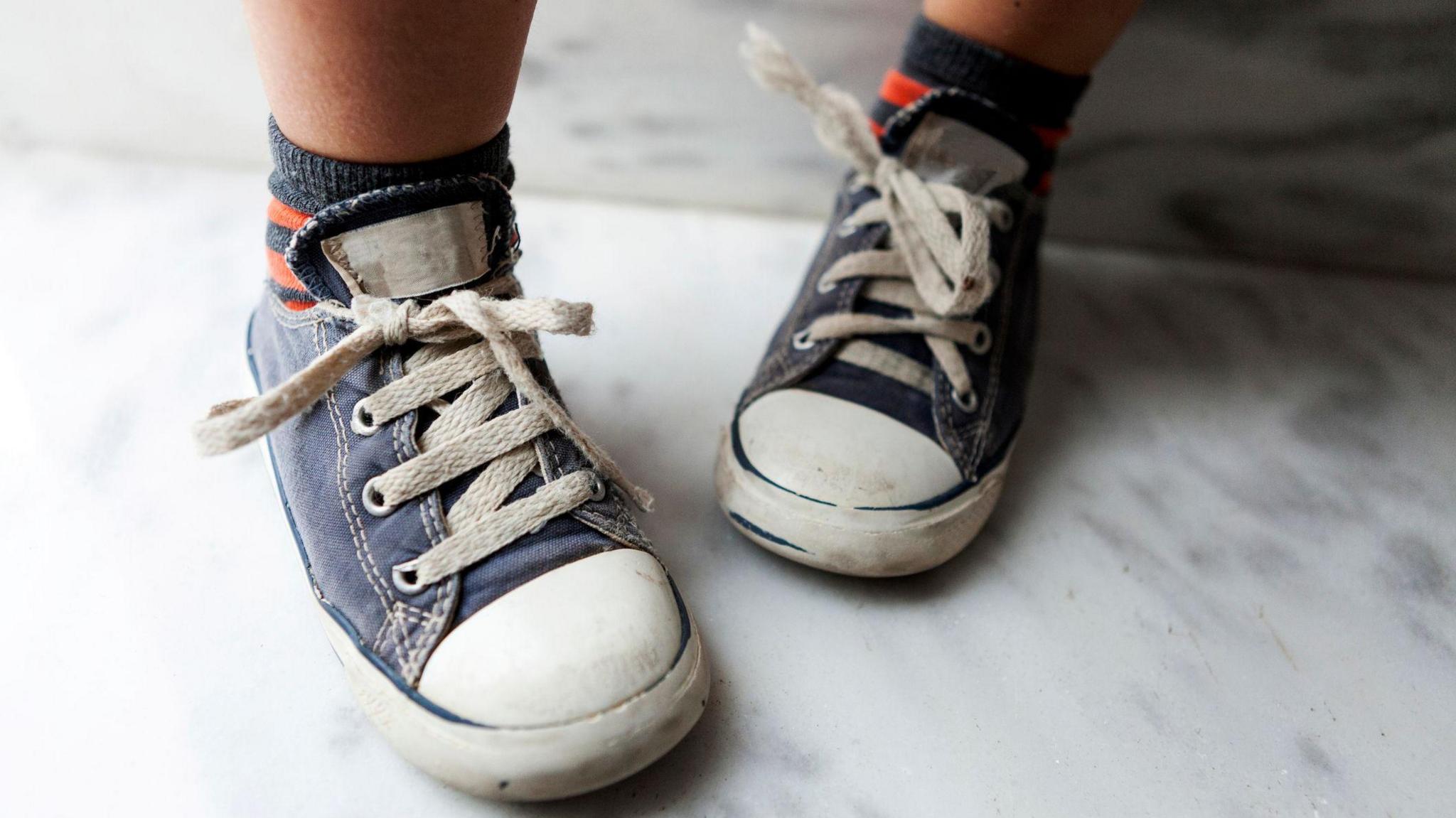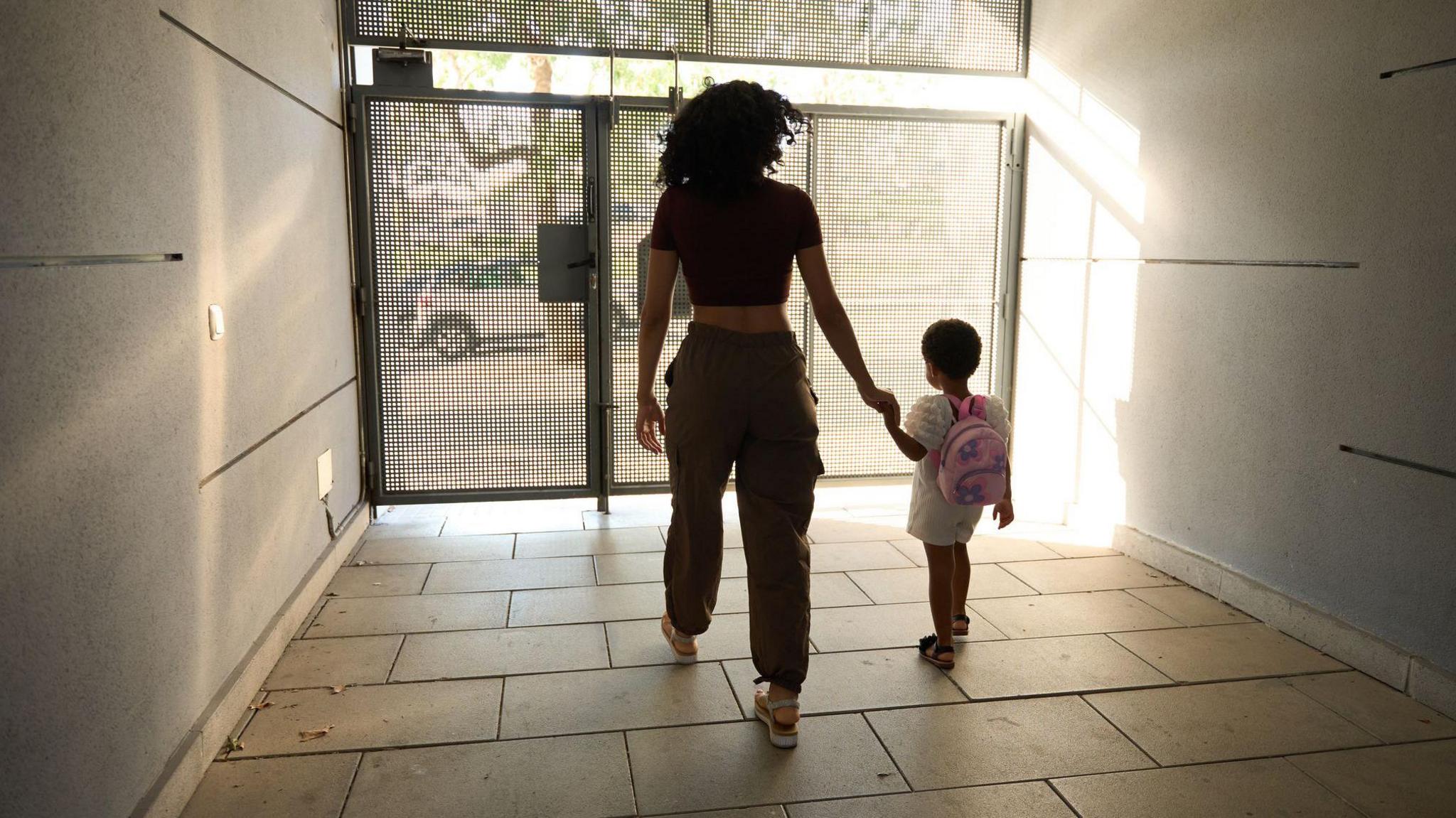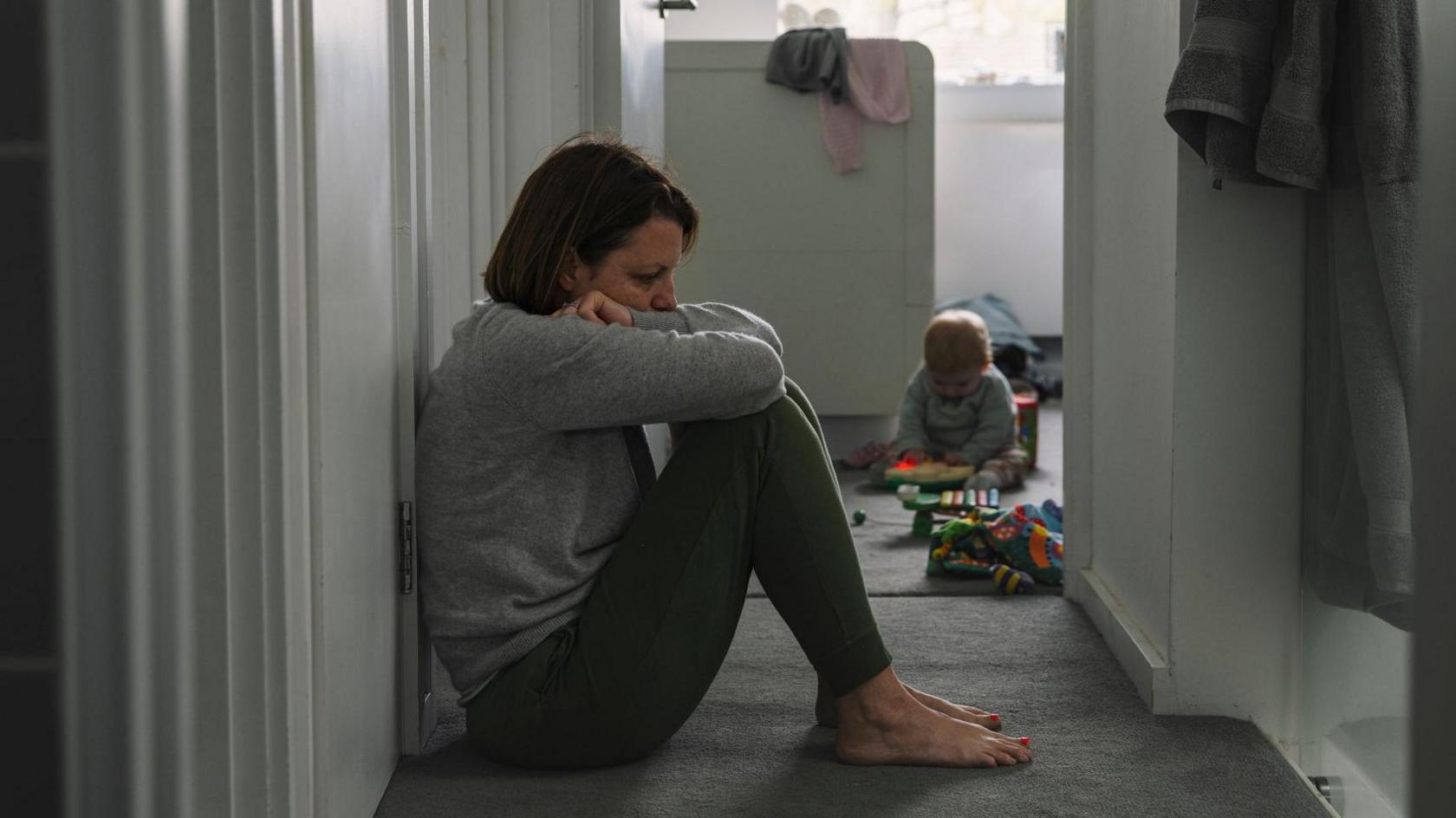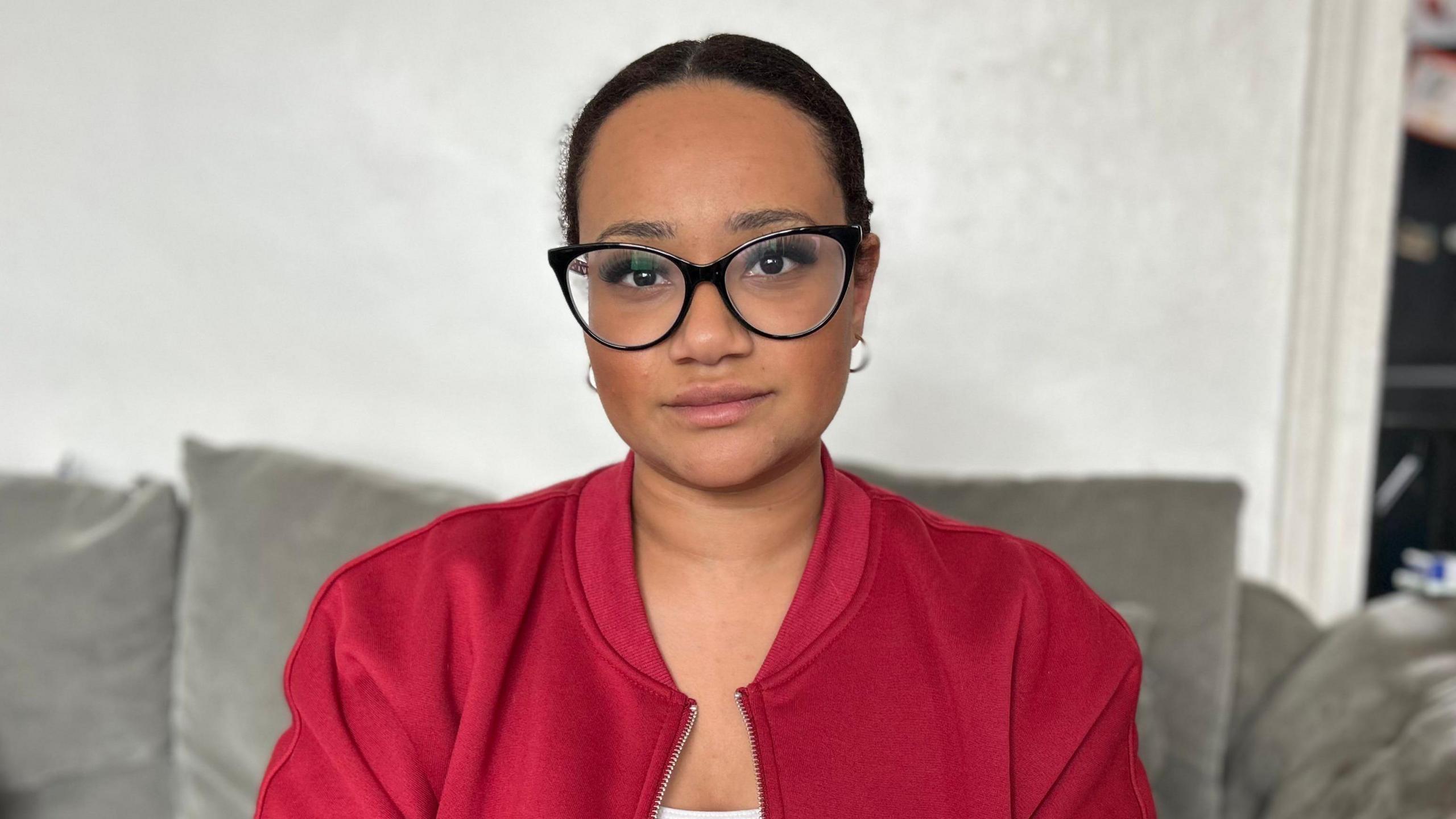Southwark sees 77% rise in homeless kids - report

About 3,500 children, approximately 5.75% in the borough were living in TA in 2024
- Published
There is one classroom worth of homeless children for every primary school in Southwark, according to a new report from the New Economics Foundation (NEF).
The number of youths in temporary accommodation (TA) in the south London borough rose by 77% in four years, meaning the area alone accounted for almost one in 30 households in TA nationwide, the paper found.
Hollie Wright, the report's author, told BBC London that children in TA faced wide-ranging harms including mental health problems, malnutrition and difficulties in school, which could be a "disaster" for their future.
Southwark Council said it aims to tackle homelessness in the borough "head-on".
The report, external, titled Nowhere to Grow: The hidden harm of temporary accommodation on children, found that about 3,500 children, approximately 5.75% in the borough, were living in TA in 2024, up from 1,900 in 2020.
The 77% increase was higher than the 25% rise seen across England between 2020 and 2024.
A spokesperson for Southwark Council said: "As the largest local authority landlord in London, we have been greatly impacted by the national housing crisis, but we are doing all that we can to alleviate these pressures on our residents.
"Since 2013/14 we've built or began construction on more than 3,000 council homes, more than anywhere else in England.
"Our Homelessness and Rough Sleeping Strategy 2025-2030 seeks to address this crisis head-on by tackling the root causes of homelessness through early intervention working across services and departments.
"In 2024-2025 we recorded a 72% success rate in preventing homelessness, including amongst families with children, where early help was provided."
Toilet seat used as desk
Ms Wright said as more children were "being swept into homelessness" and experiencing lengthy stays in unfit TA, they faced immediate trauma and illness, long-term developmental delays and emotional scarring.
She said families were frequently being placed in B&Bs or nightly paid accommodation more than an hour away from the area where they originally lived, with children left facing a long journey to school, or moving to a new school.
And keeping up with their learning was a struggle, she said.
"I spoke to one woman, as part of my report, whose daughter had to do her homework leaning on the toilet seat as a ledge, because the family was in one room," she said.
Housing crisis reached whole new level - council
- Published29 October 2024
Overcrowding in TA was also causing knock-on effects on a children's psychological wellbeing including sleep deprivation and stress, her report said.
Ms Wright said one of the children in another family she interviewed developed severe agoraphobia after the family was confined to a single room for more than a year in TA.
But the issue, Ms Wright said, was not unique to Southwark.
"Things are fairly dire across the country," she said. "When we think about the physical spaces children occupy, their homes and school, if both are uprooted, it's a disaster for children's lives.
"When it comes to TA, the preferred housing is properties the councils own. But a lot of those are full basically everywhere in the country."
The result, she said, was councils paying landlords for poor quality properties at a premium rate.
"A lot of these private sector rental houses have damp, mould and physical hazards," Ms Wright said.
"Another family I spoke to had a sparking electrical box in the room a disabled child was staying in."
'Duty to communicate'
In her report, she said councils were paying unprecedented sums to meet their statutory duties, with roughly £2.3bn spent on TA nationally in 2023-24.
But a lack of communication between schools, the healthcare system and social care meant vital information about the health and wellbeing of children in temporary accommodation was being missed, Ms Wright said.
"Children are falling through the gaps," she said. "It is not a case of people not doing their best, it's that [TA] is not currently working and the systems are not in place."
She said she focussed on local authority level recommendations in her report, including a "duty to communicate", which would mean housing, health and social care services would have to communicate when placing children in temporary accommodation.
She also suggested creating a dedicated role or team in local authorities to provide families with a single point of contact when navigating temporary accommodation.
A spokesperson for London Councils, an organisation which represents all of the capital's boroughs, said further work was needed to increase affordable housing across London.
"London boroughs are proud to have led a resurgence in council housing delivery more than 24,000 new council-led homes since 2018-19, but more homes are needed to address the capital's chronic shortage of affordable housing," they said.
Listen to the best of BBC Radio London on Sounds and follow BBC London on Facebook, external, X, external and Instagram, external. Send your story ideas to hello.bbclondon@bbc.co.uk, external
- Published24 May

- Published28 January

